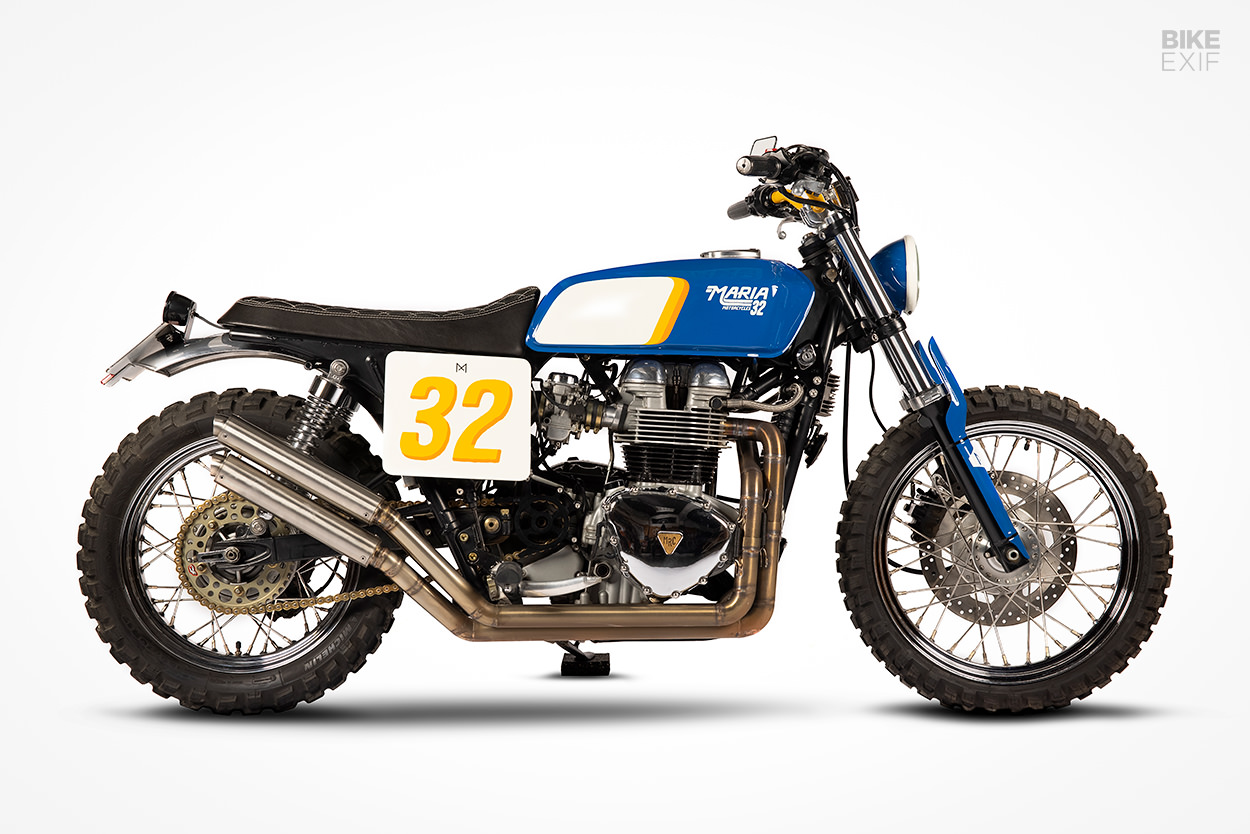
There’s something to be said for using the right tool for the job. But there’s an almost defiant joy to choosing a motorcycle that’s completely inappropriate for the ride at hand—especially if you’ve been told you can’t. Case in point: this 2005 Triumph Bonneville T100 scrambler.
It belongs to Maria Motorcycles founder, Luis Correia—and even though there are better off-road motorcycles out there, it’s the fourth Bonneville-based scrambler he’s built for personal use. Luckily, the Portuguese shop is well-versed in building custom Triumphs.
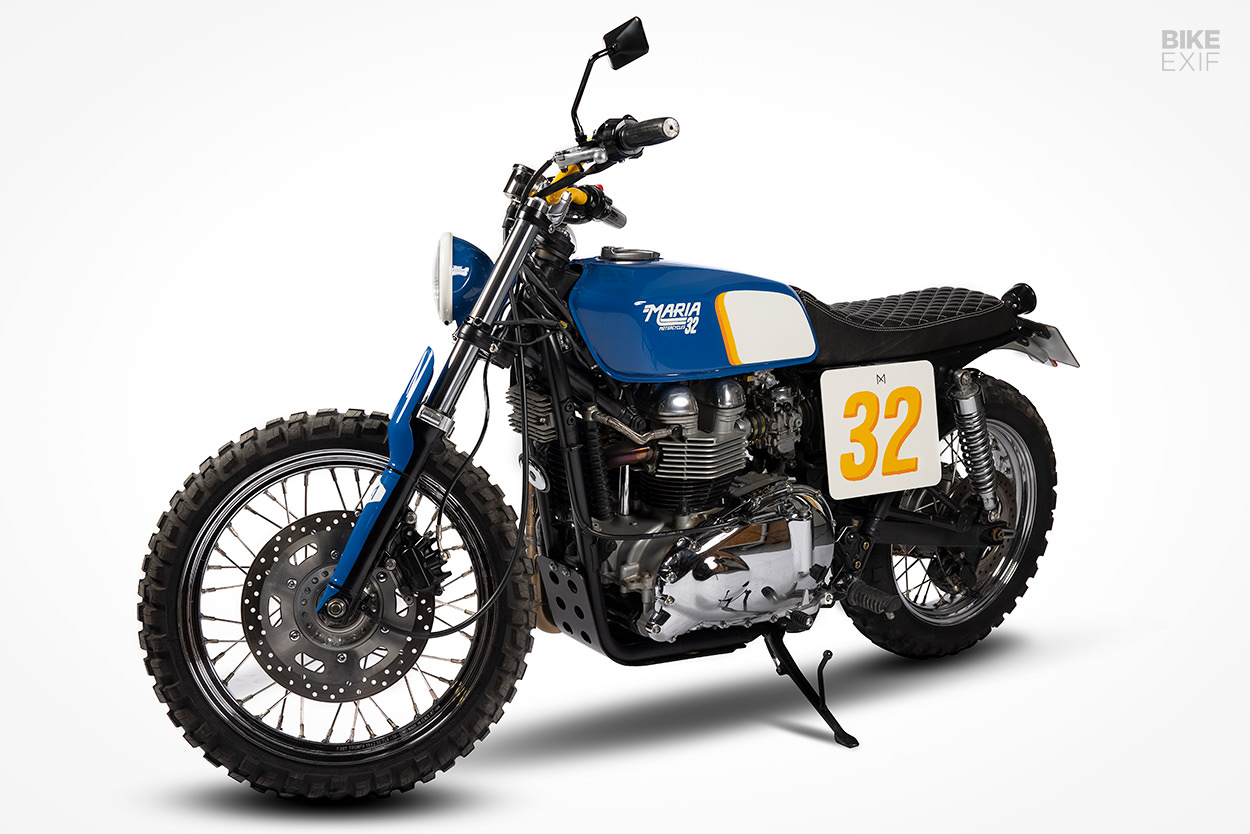
“Many people say that a Bonnie is not good for off-road at all,” he says. “But after building more than 20 Bonnies, we really think that it’s one of the coolest vintage big CC bikes to have fun on the dirt!”
“I really love these bikes because they are, for me, some of the best base bikes for customization. The mechanics are simple, strong, well built, and they offer a lot of possibilities and different concepts. For radical scramblers they also are great in many aspects: great handling, amazing engine torque, and a really fun bike to ride.”
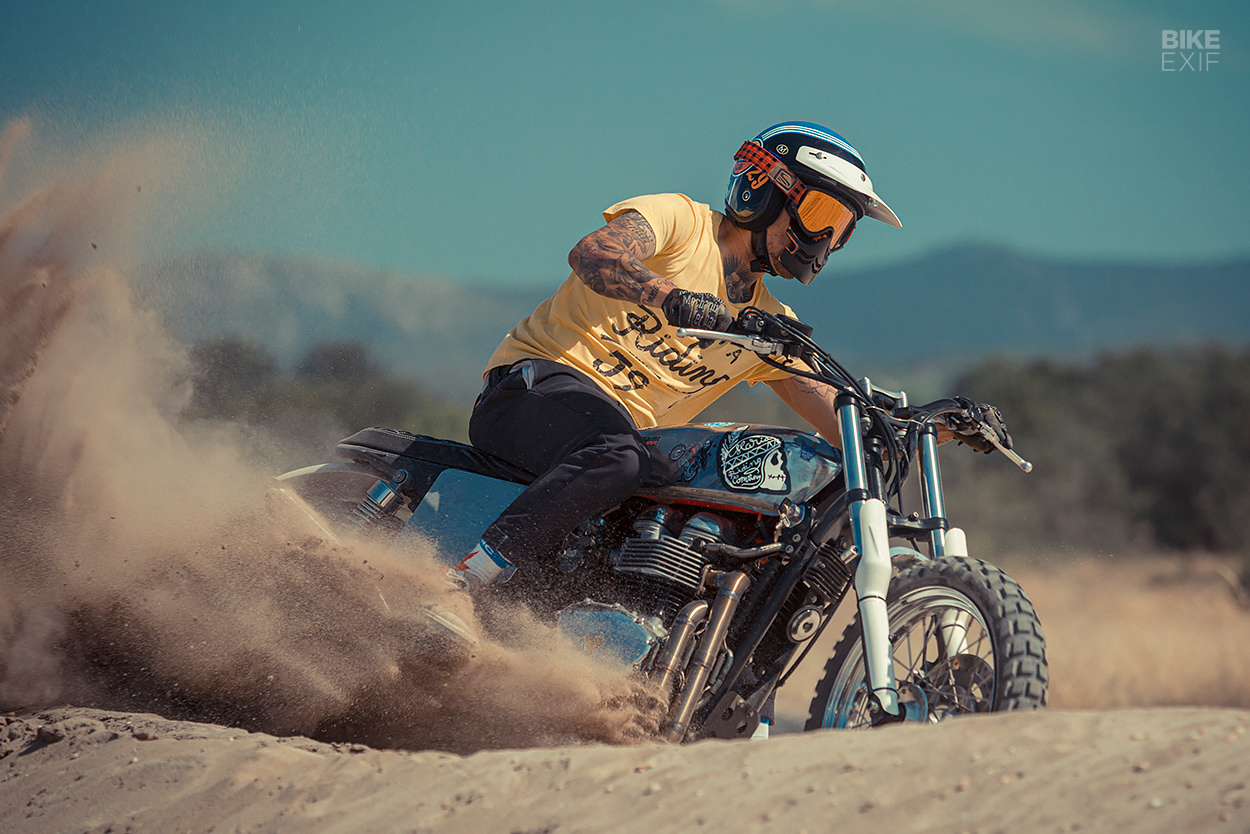
Drawing on their experience with Triumph builds, the Maria crew set out to build their interpretation of the ideal Bonneville scrambler. The project rolled out in phases—starting with the removal of all the unnecessary bits to build a ‘raw’ dirt bike.
After that, Luis thrashed it in the dirt for a while, then cleaned it up, painted it and made it street legal.
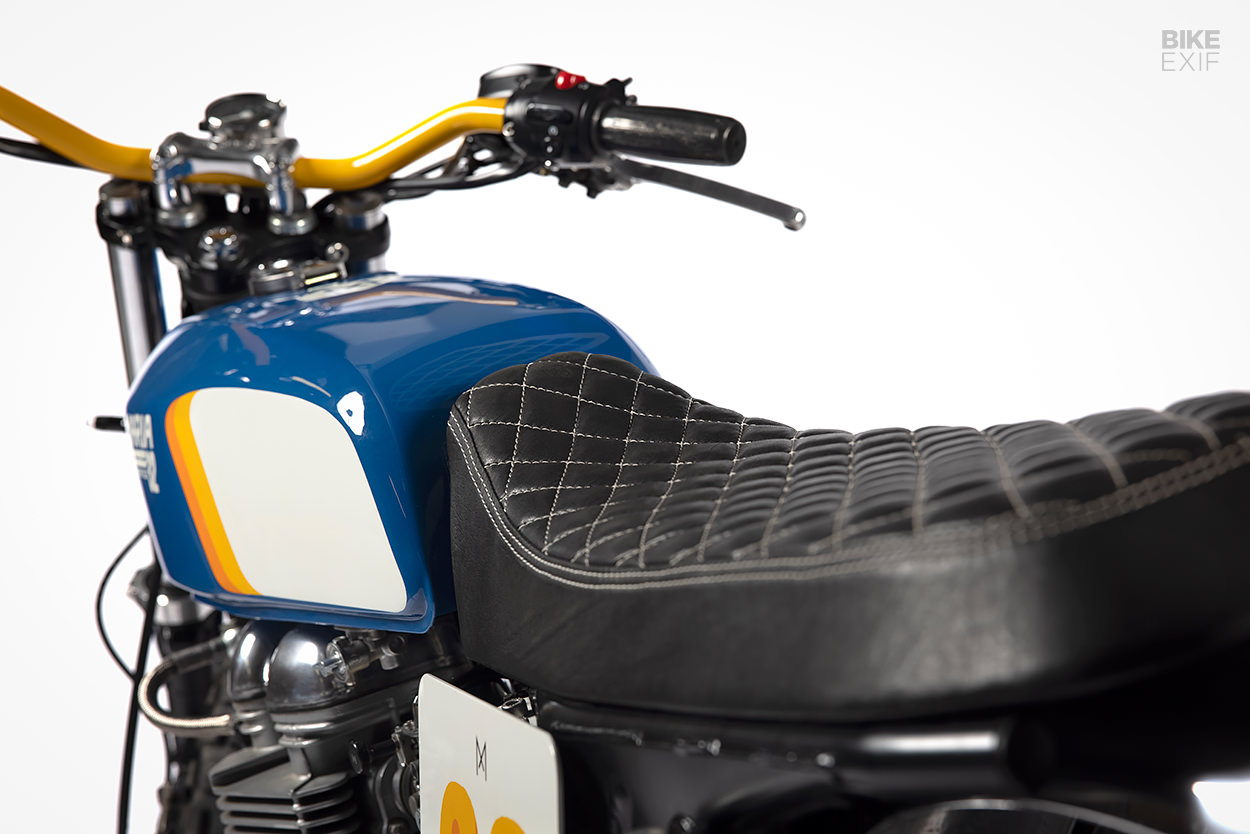
The biggest visual change is the new tank and seat arrangement. Maria started with a Yamaha RD400 tank, then built a new tunnel to make it work with the Triumph frame. It’s an inspired move that slims the Bonnie’s proportions right down.
Out back is a custom leather seat, designed to run up against the tank so that you can shift your weight around easily. The subframe’s been abbreviated beneath it, and ended off with an aluminum rear fender. A pair of custom-made aluminum number boards hang off the sides.
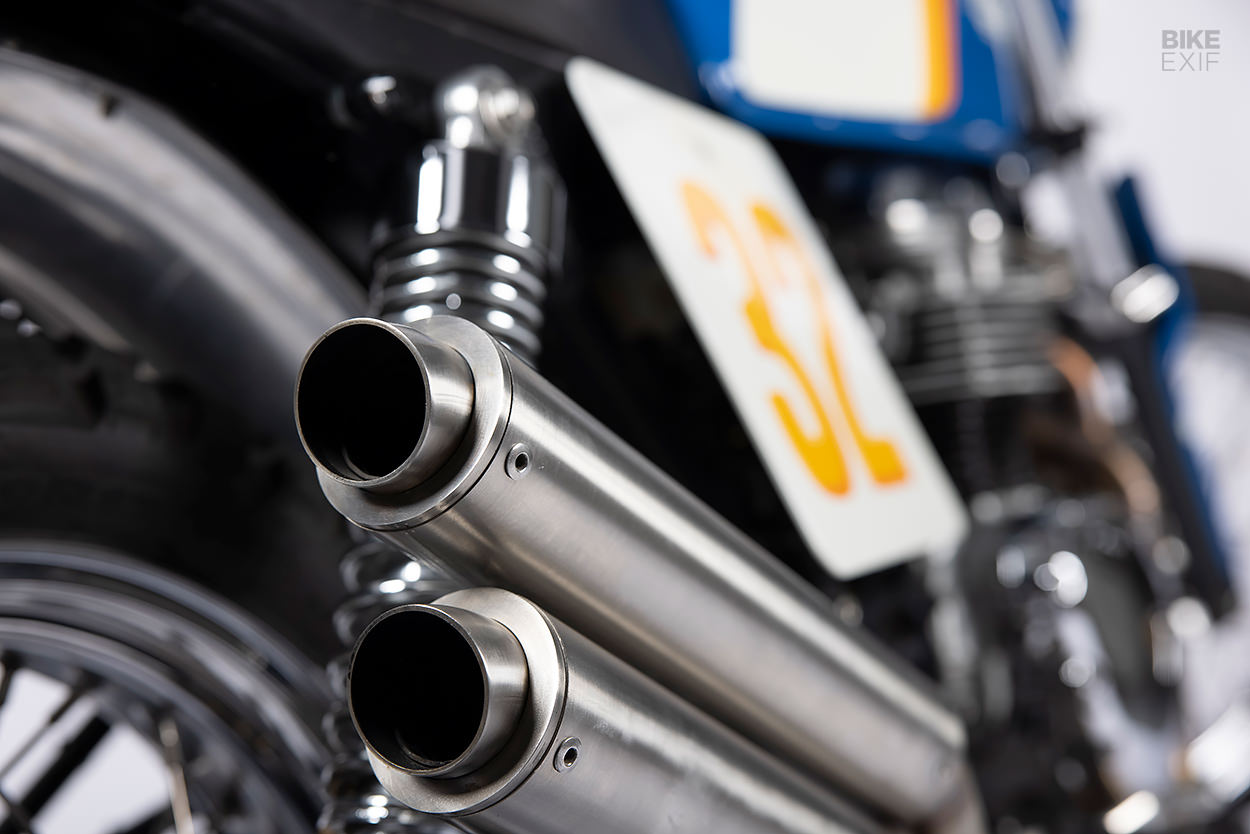
The flat track-inspired twin stainless steel exhaust system is a total one-off. Maria kept the airbox for the sake of reliability, but installed a new K&N filter and tuned the carbs.
Maria worked in whole host of smaller changes too, like a Triumph bash plate, a new sprocket cover, LSL handlebars and an ignition relocation. They also swapped the fork springs and oil out to stiffen the suspension, and added a set of fork guards, sourced on the internet. And they installed a Lithium-ion battery, in a bid to shave off a smidgen more weight.
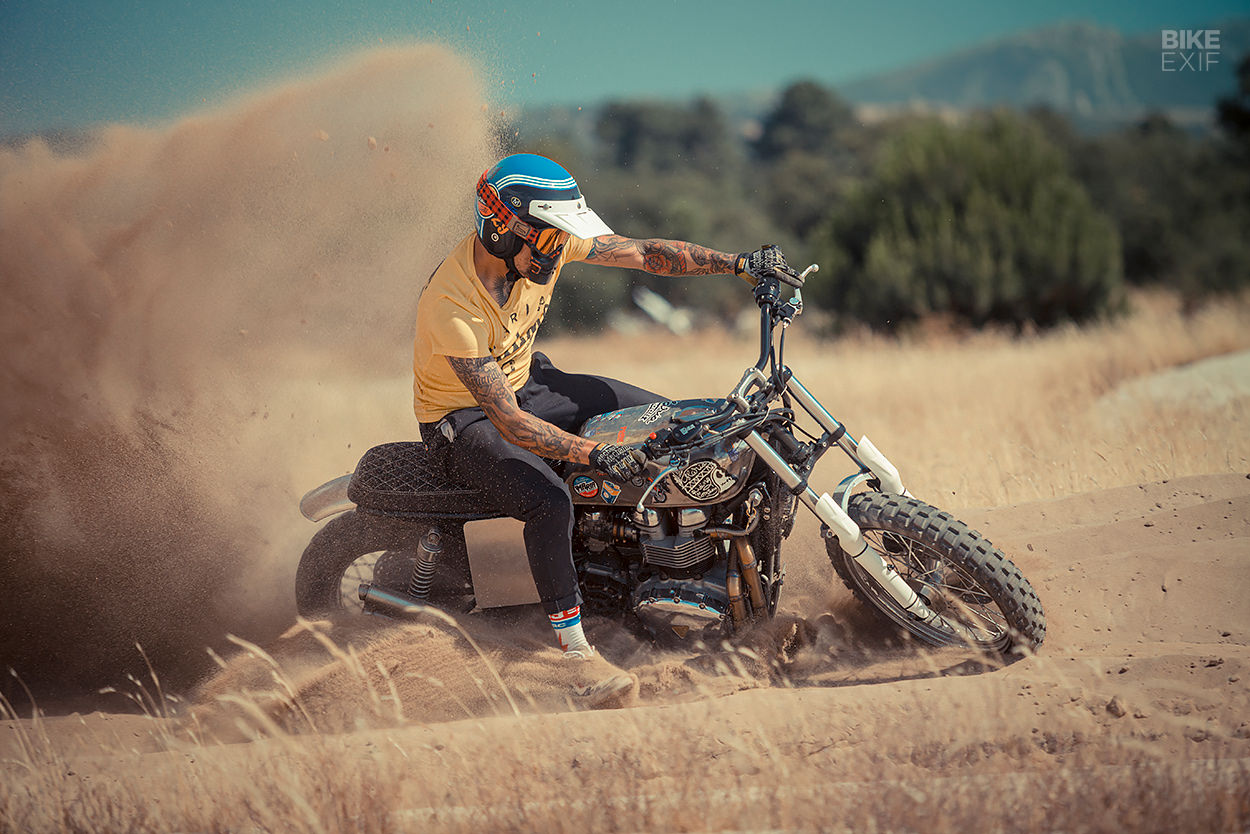
With all that done, Luis spooned on a set of Michelin Anakee Wild tires, and started putting the Bonneville through its paces.
“Completely raw, it was perfect to have fun and to use on the dirt on really extreme conditions without concerns,” he says. “After six months having fun with it, I decided to give it a more ‘legal’ look.”
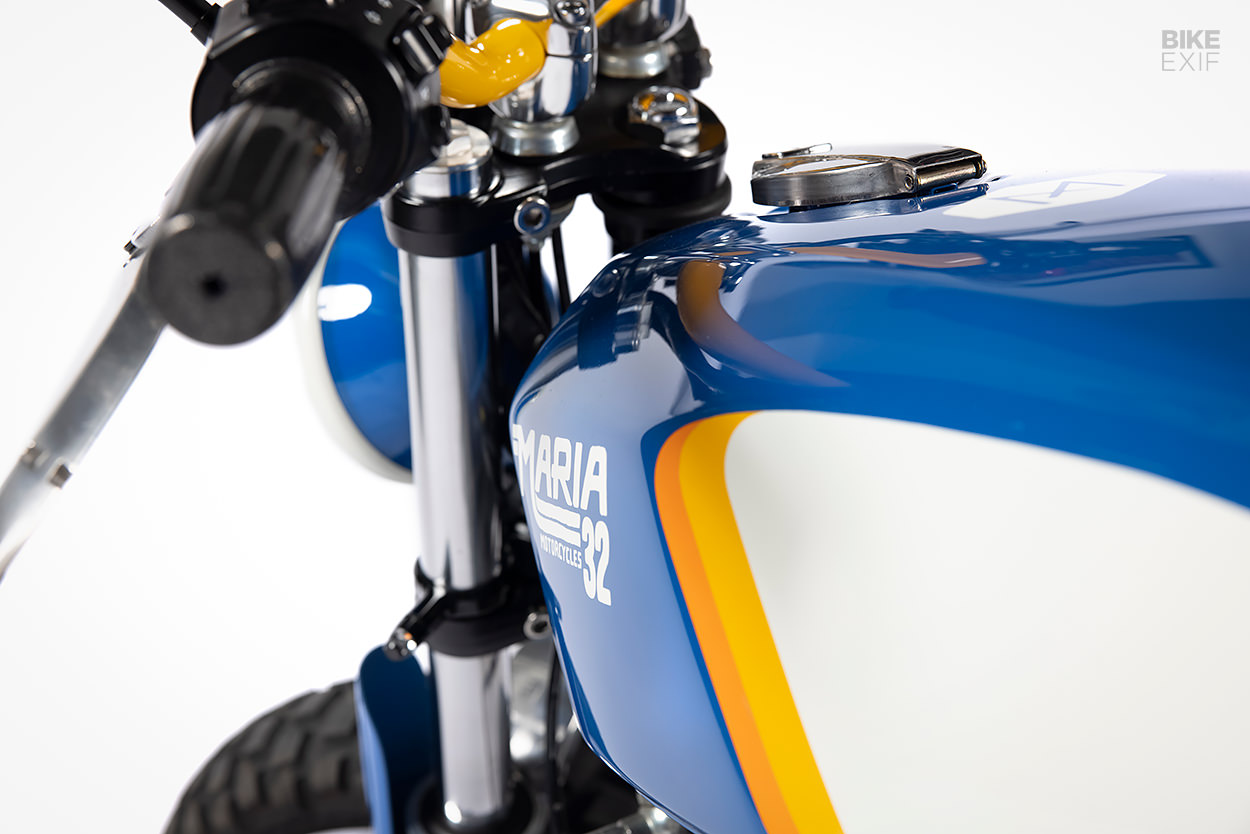
“So we designed a kind of a vintage off road race bike. Vivid colors—and this time we decided to keep the chrome, and polished all the aluminum parts like 60s race bikes.”
On went classically styled lights, a set of grips from Posh Japan, and a no-name-brand speedo. Aluminum bits like the handlebar risers and rear fender were polished, and the bike was wrapped in one of Maria’s hallmark eye-popping liveries, earning it the nickname ‘Savage Blue.’
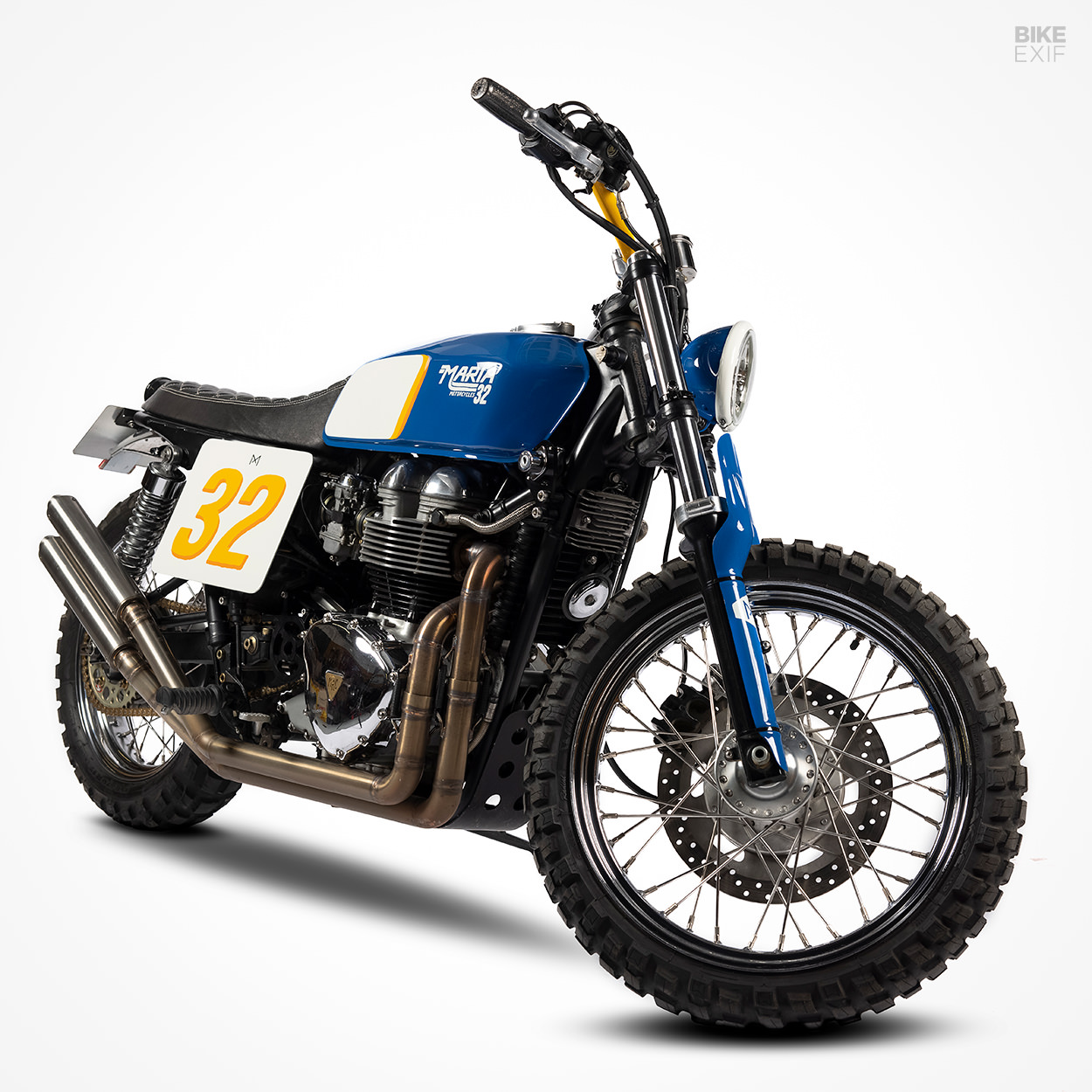
We love the idea of the Bonneville’s grunty parallel twin motor in a simplified, dirt-specific package. But more than that, we love that this bike has been built to be ridden in anger.
“Most people say that these scramblers are just show bikes, and that it’s a myth that they can be good off-road,” says Luis. “Well, we want to prove otherwise… and this time we have action photos and a video.”
Maria Motorcycles | Facebook | Instagram | Images by Luis Correia (studio) and Manuel Portugal (outdoor)
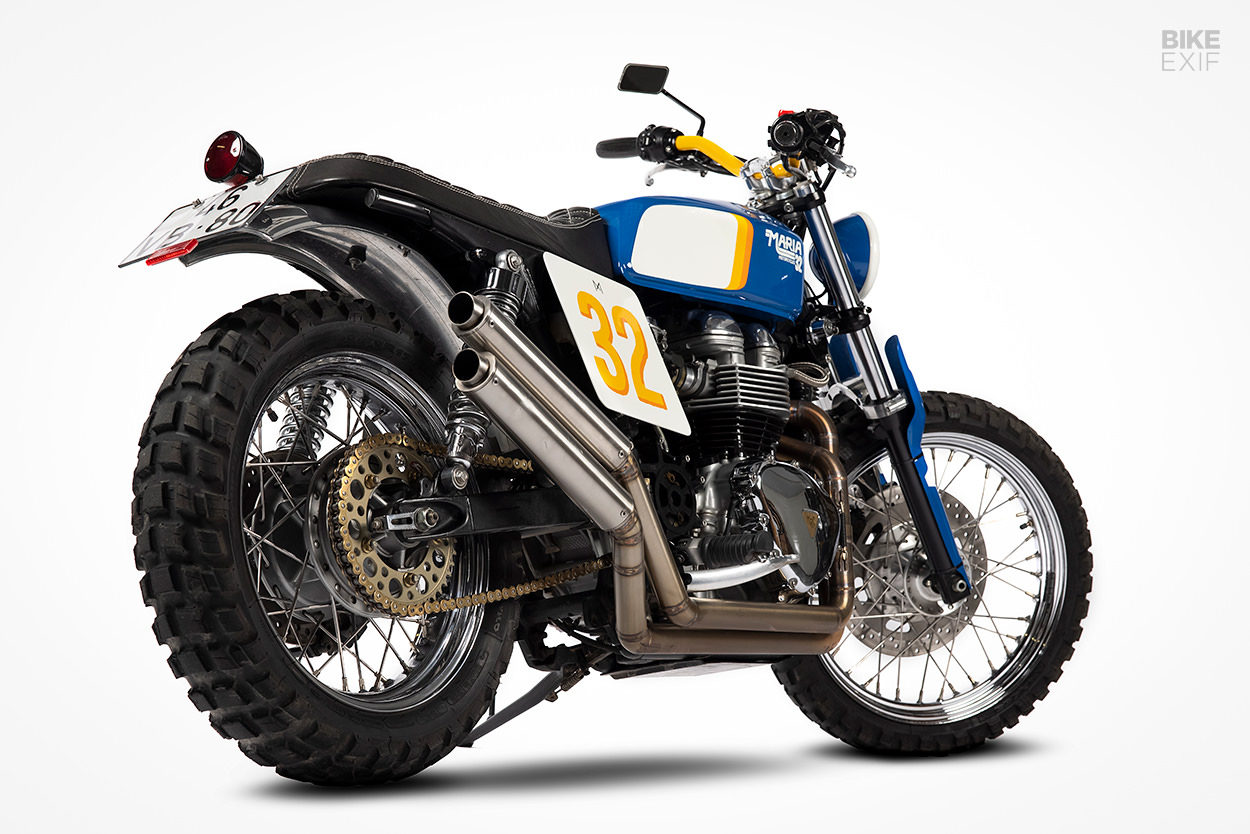
from Bike EXIF https://ift.tt/35c9WOx
No comments:
Post a Comment